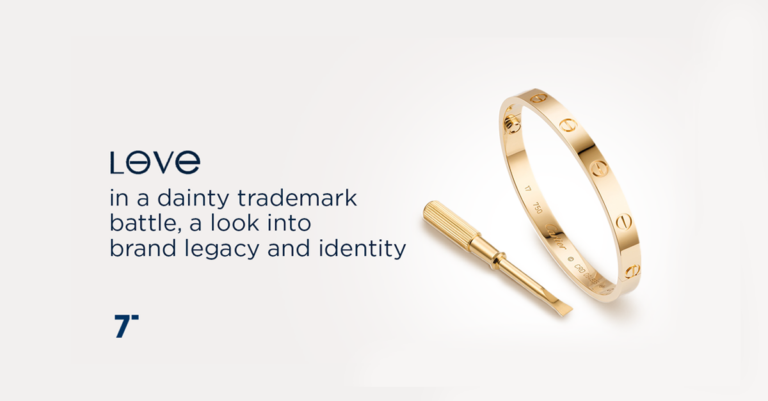“LOVE” is a ubiquitous term that could belong to anyone until Cartier made it theirs in the jewelry realm.
In September 2022, Cartier filed a lawsuit against the London-based jewelry brand Goussin Ltd. over the use of the word “LOVE” in connection with Goussin’s bracelets, claiming it infringed upon Cartier’s trademark.
The Paris Judicial Court sided with Cartier, determining that Goussin’s bracelets closely mirrored Cartier’s well-known “LOVE” design, which could confuse consumers.
As a result, Goussin was ordered to pay €10,950 in damages for trademark infringement, €8,000 in moral damages, and €5,000 for unfair competition. Furthermore, Goussin was permanently prohibited from using “LOVE” as a brand identifier for jewelry in France.
The court ruled that the word “LOVE” was used by Goussin as a brand identifier for its jewelry, rather than as a simple decorative or descriptive term. Furthermore, the court found significant similarities between Goussin’s “LOVE” bracelets and those of Cartier, particularly in their design and marketing.
Cartier’s recent legal win against Goussin Ltd highlights the importance of preserving and maintaining a consistent brand and conceptual identity.
Invented in 1969 by designer Aldo Cipullo, the iconic screw-lock bracelet has since revolutionized contemporary jewelry culture. Since then, Cartier has materialized “LOVE” from a word into a world through an extensively crafted jewelry line, design precision, and consistent storytelling.
Symbolizing the idea of “locking” love, which can only be opened with a special screwdriver — a metaphor for the permanence and commitment of love.
The collection, originally designed to be worn as a symbol of romantic attachment, has evolved over the years to include a wide range of jewelry pieces such as bracelets, rings, necklaces, and earrings. The “LOVE” motif remains central, representing a deep, unbreakable bond.
Cartier didn’t win by merely trademarking a word; rather, it continuously associated that word with a coherent design strategy, emotional message, and visual identity. The “LOVE” trademark thrived not only through legal protection but also through conceptual safeguarding.
In essence, the Cartier LOVE collection is a celebration of enduring love, exclusivity, and luxury. Its design and messaging resonate with those who view love as both powerful and everlasting, making it a statement of personal connection and devotion.
For emerging brands, this is a masterclass in long-term thinking. The most powerful trademarks are lived. They’re reinforced through product, messaging, and consumer experience at every touchpoint.
This case is a blueprint for building a brand that lasts: developing a signature, staying consistent, and making sure your audience feels your identity throughout. Because when your trademark becomes your legacy, even the simplest word becomes yours alone.






